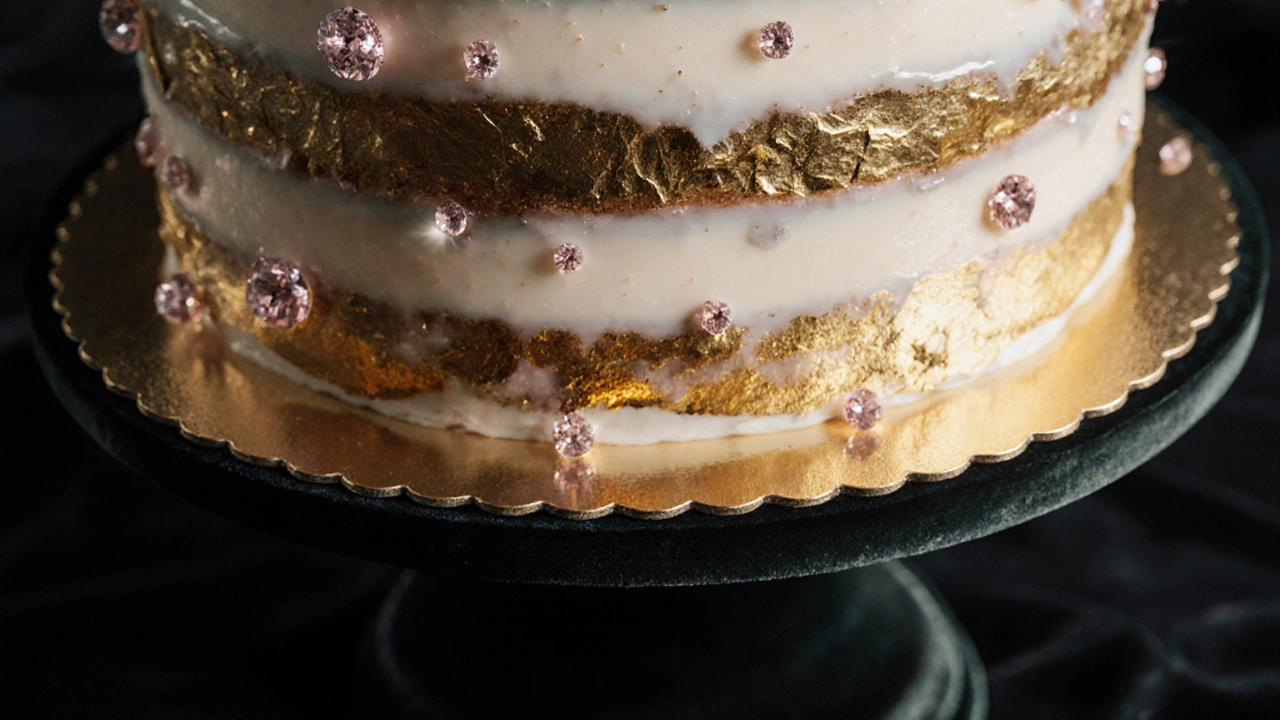Gold Cake Price Explained: What You Need to Know
When talking about Gold Cake Price, the amount you pay for a cake decorated with edible gold leaf or gold‑flaked details. Also known as gold‑infused cake cost, it reflects both the luxury feel and the real material expense behind the sparkle.
Key Factors That Shape the Cost
The first thing to understand is that Gold leaf, thin sheets of 24‑carat gold made edible for desserts is the biggest price driver. A single gram can run anywhere from £30 to £80, depending on purity and supplier. When you add that to the base Cake pricing, the standard cost of ingredients, labor, and bake time for a regular cake, the total jumps quickly. In short, gold cake price equals (base cake cost + gold leaf amount × gold leaf cost) plus any extra decoration fees.
Next up is Artisan chocolate, high‑quality chocolate crafted in small batches, often used as a base for luxury cakes. Using single‑origin cocoa or tempered chocolate adds a premium feel, and bakers usually charge more for that richness. If you pair gold leaf with dark artisan chocolate ganache, you’re paying for two premium ingredients, which directly lifts the overall price.
Another layer is the Luxury dessert, any dessert marketed as high‑end, often featuring rare ingredients and elaborate presentation. These desserts are typically sold at upscale venues where overhead costs are higher. The ambience, service, and branding all factor into the final bill, meaning a gold‑topped cake at a boutique patisserie will cost more than the same cake at a regular bakery.
So how do these pieces fit together? Think of it as three semantic triples: (Gold cake price) encompasses (gold leaf cost); (Gold cake price) requires (artisan chocolate); (Luxury dessert) influences (cake pricing). This web of relationships explains why a simple birthday cake can jump from £20 to over £200 once you sprinkle in gold.
Are you curious about the exact numbers? A small 8‑inch round cake with a thin gold dusting (about 0.2 g) might add £6‑£10 to the base price. Scale up to a three‑tier wedding cake with full gold leaf coverage, and you’re looking at 5‑10 g of gold – that’s £150‑£800 extra, plus artisan chocolate layers that can double the base cost. This shows how the amount of gold and the quality of chocolate directly drive the final price.
Budget‑savvy bakers often offset the gold cost by using gold‑colored cocoa powder or edible gold spray, which mimics the look for a fraction of the price. While the visual impact isn’t identical, it’s a practical compromise for clients who love the idea of gold but need to stay under a certain budget.
If you’re planning a special event, start by deciding how much gold you really need. A single gold‑leaf accent on the top can give the wow factor without breaking the bank. Then choose your chocolate – a dark ganache made from single‑origin beans adds depth without the cost of a full‑blown chocolate sculpture. Finally, talk to your baker about the overall Cake pricing structure so you understand where every pound goes.
Below you’ll find a curated collection of articles that dive deeper into each of these topics – from gold leaf sourcing and cost breakdowns to artisan chocolate selection and budgeting tips for luxury desserts. Explore the posts to see real‑world examples, price guides, and step‑by‑step advice that will help you decide if a gold‑infused cake fits your next celebration.

